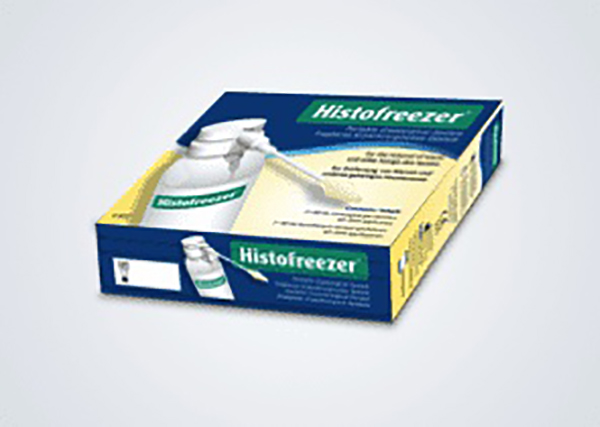Histofreezer

HISTOFREEZER®
PORTABLE CRYOSURGICAL SYSTEM
WHAT IS HISTOFREEZER?
Histofreezer is a portable cryosurgical device.1
WHAT IS HISTOFREEZER USED FOR?
Histofreezer is indicated for nine types of benign skin lesions:1
- genital lesions
- molluscum contagiosum
- seborrheic keratoses
- skin tags
- verruca plantaris
- verruca vulgaris
- verruca plana
- actinic keratoses (facial and non-facial)
- lentigo (facial and non-facial).
Resolution rates depend on the type of lesion and may range from 45% for larger plantar warts, averaging a little above 7.0mm in diameter,2 to almost 100% for common warts.3
Children under 4 years of age should not be treated with Histofreezer.4
WHY CHOOSE HISTOFREEZER?
Histofreezer works at -55oC1 with:*
- tolerable levels of discomfort2,3
- low risk of scarring2
- comparable efficacy to liquid nitrogen3
- no damage to the ozone layer.1
WHAT DOES HISTOFREEZER CONTAIN?
The Histofreezer Portable Cryosurgical System Kit comprises:
- aerosol canister – filled with liquefied gas, consisting of a mixture of dimethyl ether, propane and isobutane. This gas mixture does not damage the ozone layer
- applicators – 2mm small applicators and/or 5mm medium applicators
- Directions for Use – contains full details on the principle and operation of Histofreezer and its use in the treatment of warts and benign lesions.
HOW DOES HISTOFREEZER WORK?
Evaporation of the liquefied gas mixture draws heat from the surroundings. The applicator, which serves as a reservoir for the cryogen, reaches a temperature of -55oC within 15 seconds. Its action is based on the fact that different types of skin cells vary in their sensitivity to being frozen – epidermal keratinocytes are many times more sensitive to being frozen than the network of collagen fibres and fibroblasts in the underlying dermis. Melanocytes are also highly sensitive to being frozen. Necrosis of the keratinocytes can result in the development of a blister. Full recovery takes about 10–14 days, with new tissue growing inwards from the surrounding epidermis and the more deeply situated adnexa. If the dermis is undamaged by the treatment then healing will take place without scar formation.1
The full Directions for Use should be consulted prior to use, particularly for recommended preparatory treatment, recommended freezing times for different lesions and for information on follow-up.1
*If used as per manufacturer’s Directions for Use